By David H. Lippman
The orders he received didn’t make much sense to Lord Gort, but he was going to obey them.
By the middle of May, 1940, the Allied situation in France was desperate. Hitler’s panzers had cut a bloody swath across the nation from Sedan nearly to the English Channel, trapping the British Expeditionary Force (BEF) to the north, putting its back against the sea, severing its link with the disintegrating French armies to the south.
To regain the situation, the War Office in London ordered General Viscount Gort— John Standish Surtees Prendergast Vereker—the BEF’s Commander-in-Chief, to counterattack and punch a hole in the German drive, cutting it off from its extended supply base across the Meuse River. The attack would be supported from the south by two French armored divisions.
It didn’t seem to be the best of ideas to Gort, who was personally a brave soldier—he held a Great War Victoria Cross, Distinguished Service Order with two Bars, and was wounded four times—but an indifferent strategist. He spent a good deal of time during the “Phony War” fretting over trivia such as whether soldiers should wear their gas mask straps on the right or left shoulder.
Now he was facing the massive German onslaught, which relied on a new style of warfare—tanks and armored infantry coordinated with dive bombers, which Time magazine called “Blitzkrieg.” While the British Army was 100 percent motorized—90 percent of the German troops moved on foot or horse. However, British leadership was still rooted in the horse-drawn thinking of 1918.
More importantly, an offensive was the last thing Gort wanted to launch. His troops were cut off from their supply bases at Le Havre and St. Nazaire, and many of his men were already on half rations. He wanted to retreat up the corridor that existed between the closing panzers to the south and German infantry to the east, to the ports of Calais and Dunkirk, which he saw as a springboard to evacuation, saving the lives of Britain’s only army and hope of home defense against German invasion.
However, orders were orders, and Gort was a good soldier. The theory that French armored forces would attack from the south while his troops moved in from the north made some tactical and operational sense—it would cut off the German advance from its own supply bases, leaving the panzers without gasoline and ammunition.
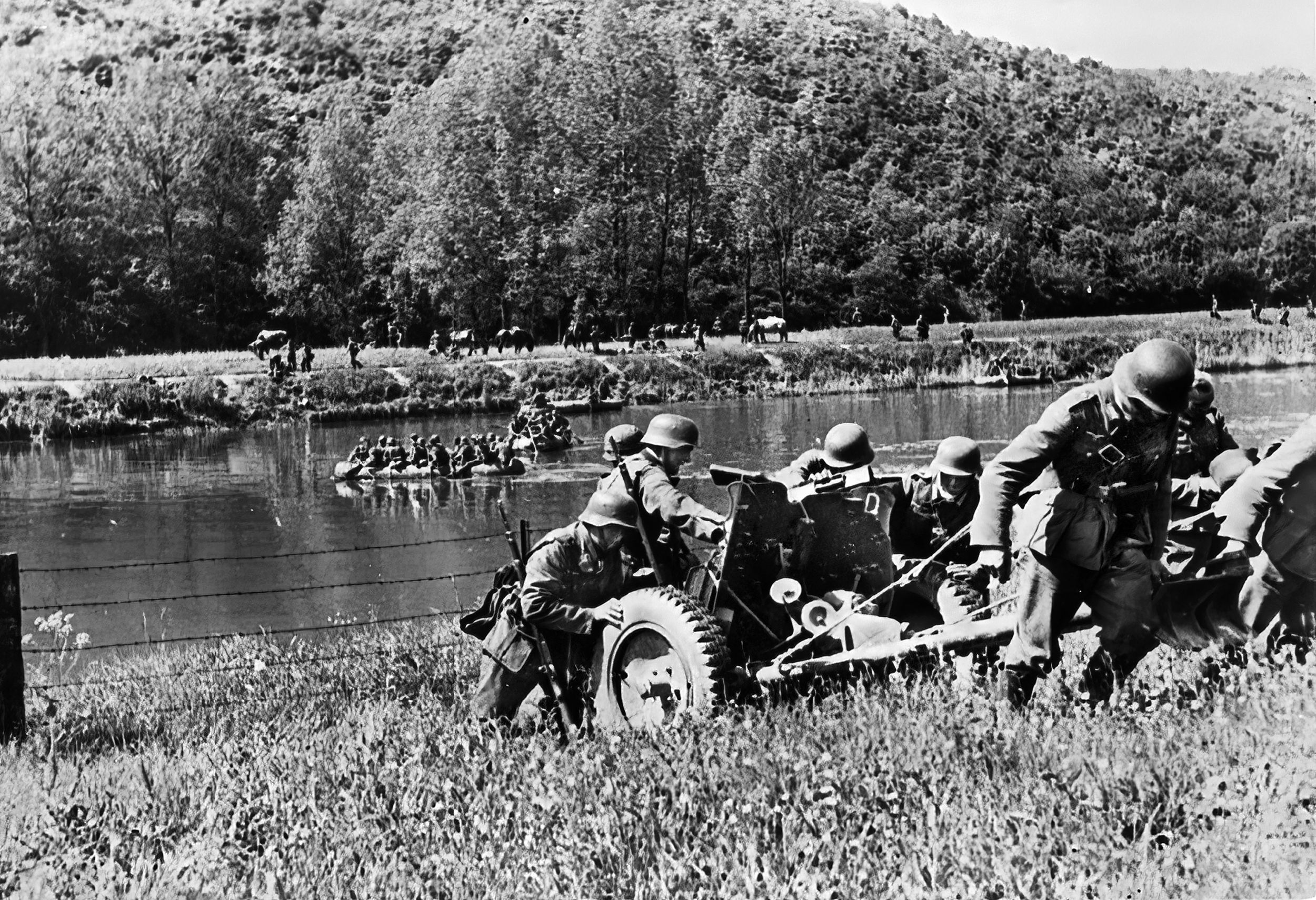
The attack plan was the invention of Britain’s Chief of the Imperial General Staff, General Sir Edmund Ironside, a huge and volcanic man, whose nickname was, in the British spirit of irony, “Tiny.”
Ironside had difficulty proposing this offensive to the French. General Gaston Billotte, French First Army commander, presented an overwhelmed, defeated, and tearful figure when Ironside flew to meet him at Lens.
Ironside towered over the quaking Billotte and shook the Frenchman by a tunic button, berating his fellow general officer at length. The intimidated Billotte came to attention and agreed to launch his portion of the attack. Posterity does not record how Billotte faced the ensuing assault—he was killed in a car crash the next day.
Ironside however, wrote caustically in his diary, “I begin to despair of the French fighting at all. The great army defeated by a few tanks.” He was right: French troops didn’t bother to lay land mines, blow bridges, set up artillery positions on high ground, or hold the lines. They simply threw down rifles and joined endless streams of refugees fleeing German attacks.
The southern attack was to be borne by two French Light Cavalry Divisions, which were really armored divisions, while the British assault was assigned to “Frankforce,” named for its commander, Maj. Gen. Harold Franklyn, who headed the 5th Infantry Division, which would provide some of the troops, along with the 50th (Tyne and Tees) Infantry Division from Northumbria, and the 1st Army Tank Brigade, with its 58 Mark I and 16 Mark II Matilda infantry support tanks. The Matildas were heavily-armored, but they moved slowly and were all in need of maintenance. Worse, their engines had a lifetime of only 10 hours before requiring overhaul and checks.
Two Territorial battalions of 151st Brigade, 6th and 8th Durham Light Infantry (DLI), both from 50th Division, would lead the attack in two columns, the tanks behind. As the two infantry battalions came from the Tyne & Tees Division, their CO, Maj. Gen. Gifford Martel, would command the assault. He was a 1930s proponent of armor, so that was helpful. However, the British infantry lacked armored Bren gun carriers and would have to attack on foot in 1918 style.
The Tommies in this assault were draftee coal miners and shipyard workers. Their officers were either young men fresh out of schools like Eton and Harrow, or Great War retreads. The troops lacked radios, supporting artillery, and the reliable Bren machine guns now being issued to the British Army.
Other units included anti-tank companies with their Boys AT Rifles, which had a powerful kick that could break the operator’s shoulder but not punch a hole in a German tank, and the 4th Royal Northumberland Fusiliers (RNF) on their motorcycles.
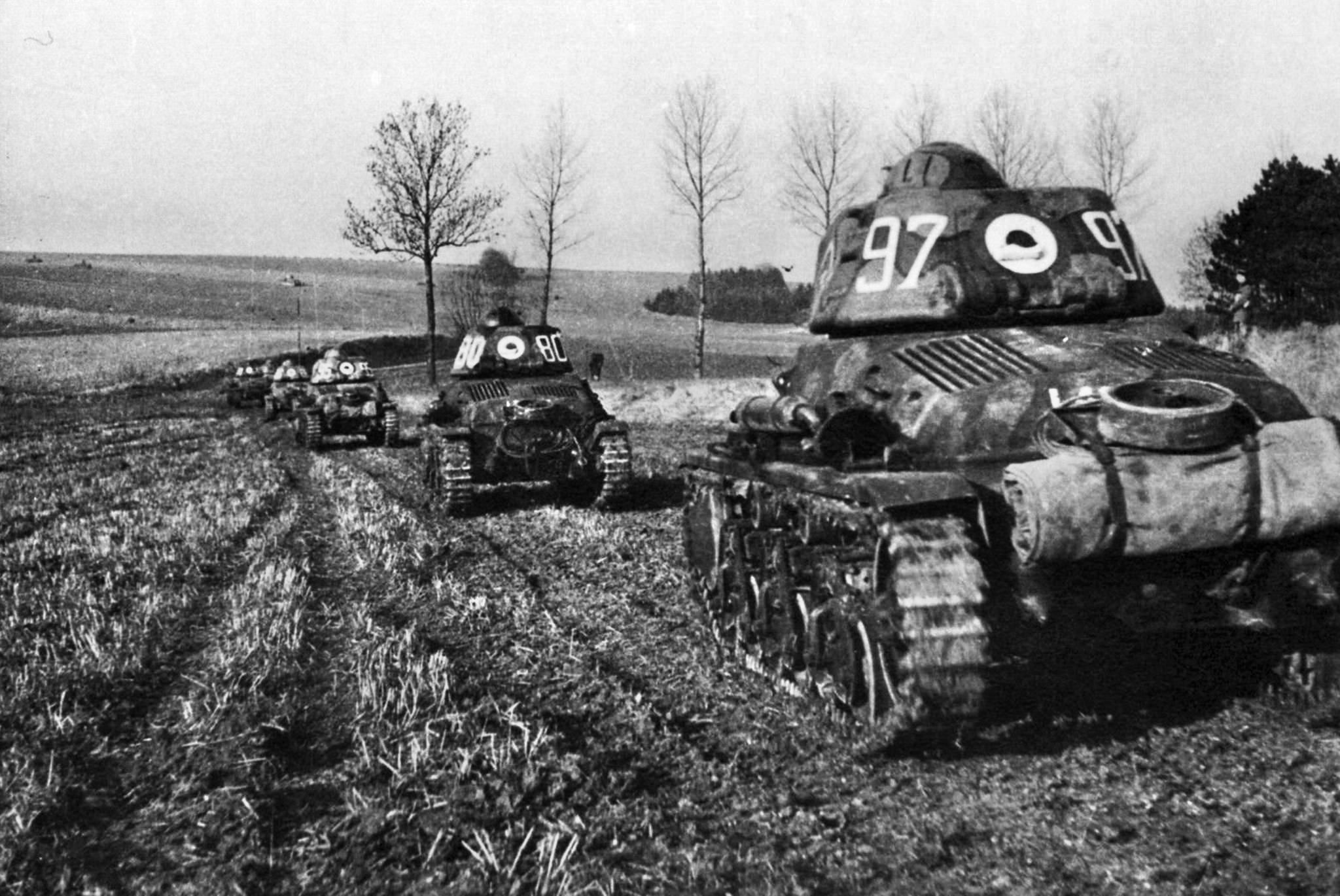
Like Ironside, Gort feared that the French would never attack and told his generals, “If our counterattack was not successful the French and British Armies north of the gap would have their flank turned and would no longer remain in their present positions.”
Just to make life harder for the British, the French told their ally their portion of the attack would “start from 21 May onwards,” which showed neither a definitive date nor any imperative.
Franklyn set his line of departure approximately 90 degrees from the German offensive, slamming into them from the north. He had poor intelligence on enemy deployments and movements, as he lacked air reconnaissance. As a result, Franklyn and Martel were unaware that they were facing two divisions that represented the opposite extremes in the German military: the 7th Panzer Division, under Maj. Gen. Erwin Rommel, and the SS Totenkopf (Death’s Head) Division, under SS Gruppenführer Theodor Eicke.
Rommel was not yet a legend, but he was already one of the most outstanding division commanders in the German army. He had earned the Pour le Mérite on the Italian Front in the Great War, leading infantry assaults against enemy positions. After the Armistice, Rommel stayed in the Reichswehr, and wrote lectures on his battles, which were collected into a book titled Infantry Attacks, which stressed boldness. Thousands of staff officers to this day read the work, and millions of moviegoers have seen George C. Scott as Lt. Gen. George S. Patton read a book called The Tank in Attack, allegedly written by Rommel. However, Rommel was not a tank expert when he took over the 7th Panzer Division after the conquest of Poland. But he learned quickly, adapting his personal methods of leading from the front and stressing mobility and flexibility to his new command. As a result, the 7th Panzer Division outraced many of its rival divisions in the drive across France.
By comparison, the Totenkopf Division and its leader represented everything that was evil about the Nazi regime. Impetus to create the division came from SS Reichsführer Heinrich Himmler, who wanted his own personal army—a necessity for the feuding vassals of the incompetently run Nazi state.
Barred from recruiting German civilians or from the Wehrmacht, Himmler turned to men he controlled—concentration camp guards—and appointed Eicke, a former Dachau camp commandant, to lead them. Even by Nazism’s questionable standards, Eicke was considered a lunatic, who ordered his camp guards and SS soldiers to practice “inflexible harshness,” telling them that international legal conventions were mere scraps of paper—brutality was the rule.
His men responded willingly. In Poland, they carved a bloody trail of massacres and atrocities. When they got furloughs after that campaign, some men went back to their own camps to regale their buddies with inflated war stories and to kill more prisoners for their own enjoyment.
The British infantry debussed from their trucks on May 21 at 2 p.m. at Vimy Ridge, scene of the legendary Great War battle, and began an eight-mile march to their line of departure. There was no time for further reconnaissance or a proper “Orders Group” for all the officers, so Martel limited his pre-attack briefing to his brigade commanders near the immense Canadian Vimy Ridge memorial from the Great War. They passed the word down the chain of command.
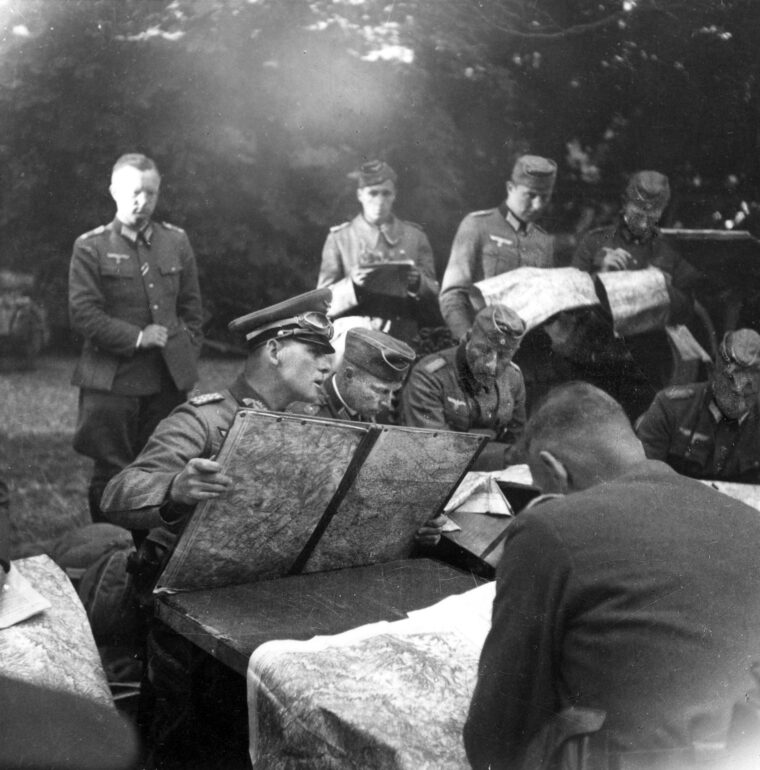
While officers planned, men kept busy. The 6th DLI’s war diary recorded: “0730: Milked cows to provide tea for breakfast.” The 8th DLI had it worse—they didn’t get fed all day.
The result was that there was no common conception about infantry-tank coordination, a subject “the British Army still had a great deal to learn about,” as Royal Marine General and historian Sir Julian Thompson wrote decades later. Nor did infantry and tanks have any means of communicating directly with each other. Many of their radios had “drifted off-net” during the intense campaign. Some British troops lacked maps of the area.
The afternoon was spent in the usual work of connecting radio sets on the same frequency, infantrymen moving up, artillery deploying on the high ground, and Matilda tank commanders kicking their drivers gently on the right or left shoulders to go right or left—British tanks lacked intercoms.
Finally, the attack moved out. For the first three miles, the Tommies found no opposition. Martel followed the advance in his staff car—jeeps were another marvel yet to come —with their reserve battalion and artillery behind him.
At Duisans, the British met opposition, and the tanks blasted open the houses, forcing the defenders inside to surrender. B and C 8th DLI Companies were assigned to secure the area as a flank guard, while A and D Companies continued the attack. They ran smack into 7th Panzer’s dug-in infantrymen, who treated them to mortar fire, stopping the 8th DLI cold.
Meanwhile, at Dainville, Y Company of the 8th RNF made history, launching the first and only attack ever made by a British motorcycle unit. Major Clarke, the company commander, dismounted one platoon and sent it forward. A section of the 4th Royal Tank Regiment (RTR) supported the attack.
German halftracks towing anti-tank guns were headed for this battlefield, so Lieutenant David Hunt of 4th RTR set up an ambush in a sunken road, which led to an archway under the railway line. He sighted a tank so that even if it was damaged it would plug the road under the railway. The plan worked—most of the German vehicles exploded under the weight of the tanks’ 2-pdr. (37mm) fire, yielding 40 frightened POWs and securing Dainville.
The rest of 4th RTR crunched across the line of departure at about 2 p.m., shredding ground and the railway. German 37mm guns opened up on the British tanks, and German gunners were astonished to see their shells bounce off the hard Matilda armor. The German crews packed up their guns and vehicles, fleeing in disorder.
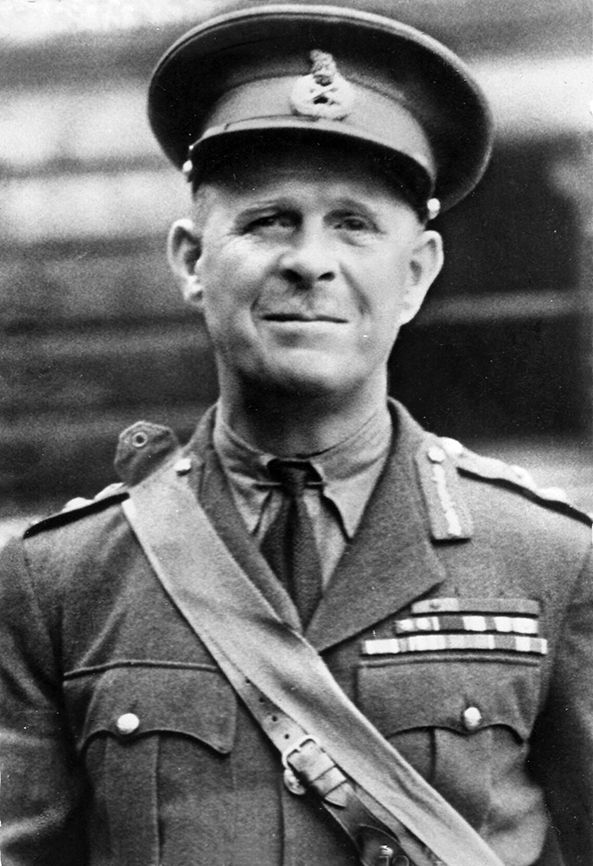
The 4th RTR took little time for amusement—they drove up the slope to Beaurains and Wincourt, running into German medium guns, which sprayed the advancing tanks with armor-piercing shells. At close range, they knocked out at least 20, killing the regiment’s CO, Lt. Col. James Fitzmaurice, and his executive officer.
Captain Cracroft, the 4th RTR’s adjutant, took over and ordered a charge, which annihilated the Germans. However, distant artillery opened fire, blasting open more tanks. Cracroft ordered his tanks to withdraw and the crews of wrecked machines to abandon ship. Wounded men dragged torn bodies through the grass. Cracroft flagged down a passing tank, only to find it was from the 7th Panzer Division’s 25th Panzer Regiment. German tanker and British officer stared at each other in mutual incomprehension, but Cracroft made his escape.
Behind the tanks, 6 DLI had entered Achicourt and Agny, mopping up many shaken Germans. The 6 DLI CO Lt. Col. Miller sent two companies on to Beaurains, taking more POWs, 400 in all, from the 7th Panzer Division. Curiously, their fate is unrecorded.
The 8th DLI brought home considerable badges and shoulder tabs from these prisoners. For the panzertruppen, it was their first battle against a serious enemy. Hitherto, they had defeated poorly trained and motivated Frenchmen and Belgians with ease.
The right-hand column split, with 8th DLI advancing on Warlus and 7th RTR crunching towards Wailly, having lost connection with the infantry. Lt. Col. Heyland, commanding 7th RTR, was shot when he tried to get out of his tank to re-form the regiment by using hand signals. His adjutant suffered the same fate.
Some 7th RTR tanks headed to Wailly, others to Mercatel. There, two Matildas knocked out four German tanks and two anti-tank batteries. The British continued to advance until they met up with 7th Panzer’s 88mm antiaircraft guns, converted into the anti-tank role because of the seriousness of the situation. They blasted open the two Matildas, ending the threat.
Meanwhile, at Wailly, a British tank caught a German infantry unit on the move and shot it up along with an artillery battery.
The noise and fighting brought the 7th Panzer Division’s CO to the scene. Accompanied by his aide, Lt. Most, Rommel leaped out of his command car and found an artillery battery’s men milling around in panic, guns still limbered, British tanks moving in.
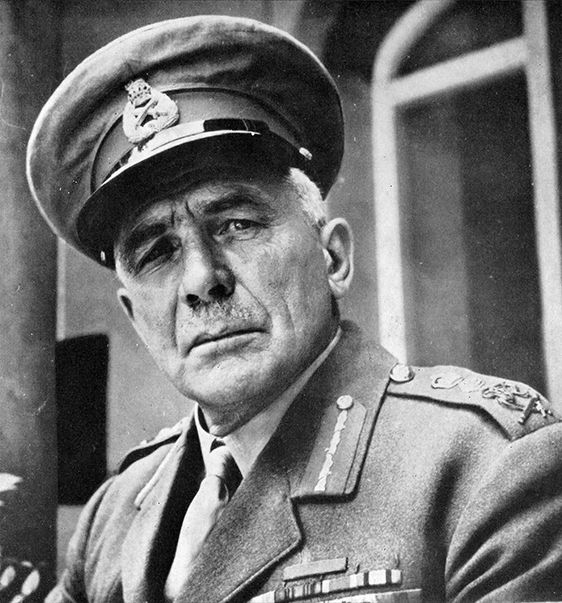
With speed and fury, Rommel ordered the gunners to unlimber their guns, prep the ammunition, and form a gun line.
The senior gunner pointed out to Herr General that his battery was an antiaircraft outfit and lacked anti-tank ammunition.
“The Tommies will not know the difference,” Rommel retorted. “Open fire!” The gunners were not prepared to argue with their CO. They set up their guns—with Rommel himself dashing about to help—and watched the British tanks close to 200 meters.
Rommel ordered his men to open fire and make every shot count. The 88mm guns proved superior to the Matilda armor, and at close range the shots ripped holes through the tanks, starting fires and grinding them to a halt. One tank’s top hatch opened, and the commander emerged, arms raised, walking unsteadily to the guns. His driver had just been killed.
Rommel rested his binoculars and rolled a spent, hot, brass shell case, off his boot. He turned to Most, looking triumphant, and was stunned to see the aide fall toward him and collapse on the ground, bleeding from the mouth, mortally wounded. Had the British soldier who fired that shot done so just a fraction to the left, he might have dramatically changed history. “The death of this brave man, a magnificent soldier, touched me deeply,” Rommel wrote later.
With 4th and 7th RTR having rushed ahead of the infantry and out of range of their own supporting artillery, they were now easy targets for German anti-tank guns. The reality of Blitzkrieg warfare was that infantry and artillery were needed to dig out well-sited anti-tank guns, but British military thinking—defined by Sir Basil Liddell Hart—was that tanks could “swan about” the battlefield like ships at sea, without their crews worrying about artillery and anti-tank guns.
Unfortunately, that approach didn’t work. With radios useless, commanders had to wave semaphore flags to give their tanks orders. Tanks’ worn-out tracks couldn’t handle the strain of driving off the roads and broke down. While Matilda armor was often impervious to German shot, the tanks carried highly flammable external clutter: spare fuel, timber baulks for emergencies, grease pots, spare clothing and “boiling vessels,” for that most important British ration item—tea.
An additional problem was that British tankers were only issued revolvers. When they bailed out, they could not match German rifles and machine guns. “The sooner sub-machine guns are provided for RTR personnel, the better,” stated a post-battle report.
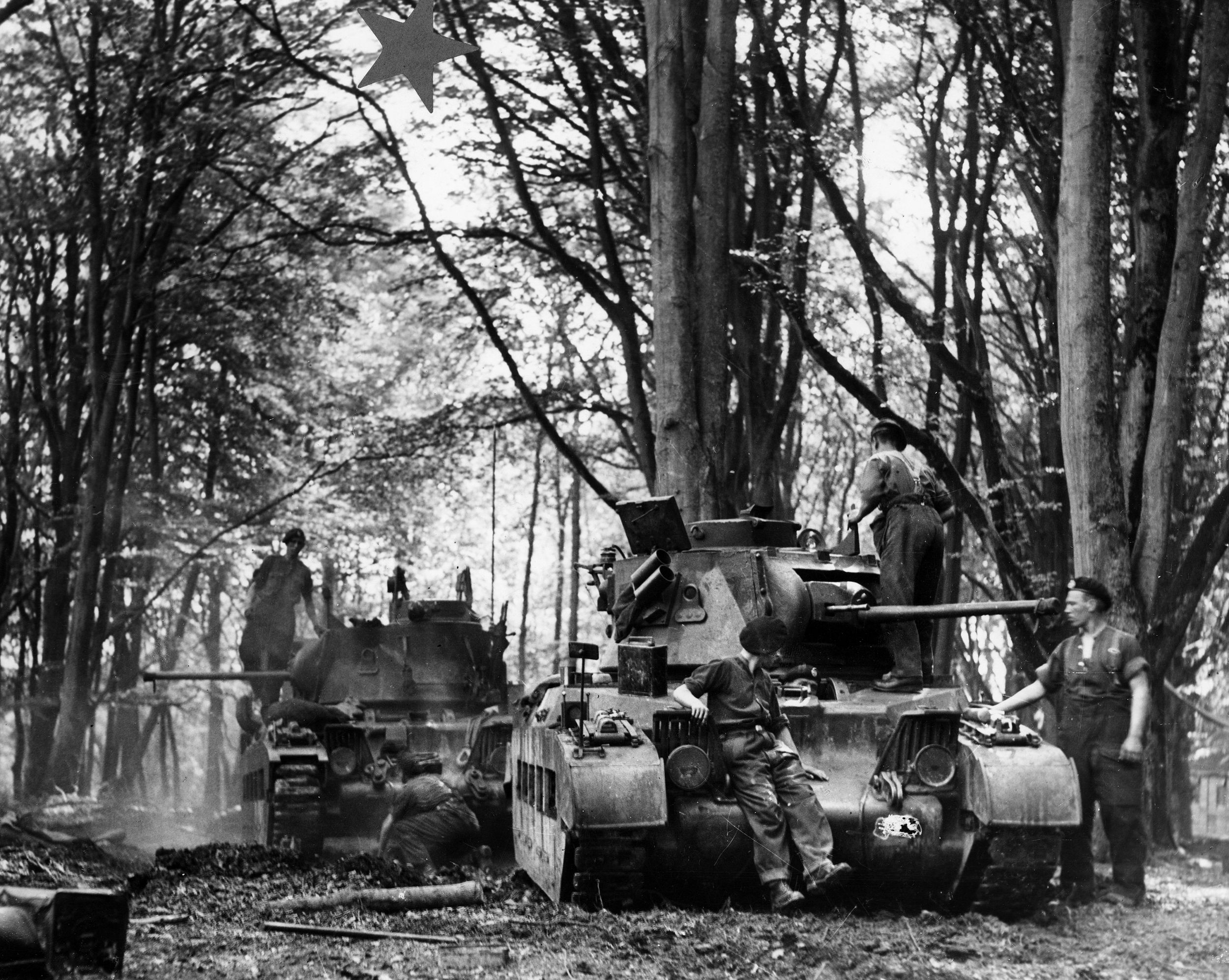
Sergeant T. Hepple, commanding the Mk VI light tank “Guinevere,” tried his best, in a vehicle that packed only two machine guns in its turret, and drove forward. Guinevere promptly took three hits by anti-tank fire. The Germans ceased fire—they likely thought Hepple and his crew were dead—and tried to bring an abandoned AT gun into action to administer the coup de grace. Hepple took care of them with machine-gun fire.
With more British troops and tanks arriving, Hepple and his men dismounted to inspect Guinevere’s damage. The tracks and radiator were wrecked. They could not be repaired on site. Hepple and his men abandoned ship and set fire to their mount to ensure the Germans could not repair it for their own use. They also burned three abandoned German motorcycles, found a map in one, and an abandoned Bren carrier. That managed to start, so he and his crew drove off. Hepple presented the map to a higher officer.
Franklyn might have needed the map, but what he really needed that day was Royal Air Force support, and that had not been forthcoming throughout the campaign—the Luftwaffe ruled the skies.
Now, responding to Rommel’s pleas for help, Ju-87 Stukas plunged down on 8th DLI at 6 p.m., sirens screaming and bombs exploding. Few Britons were hit, but the effect of both the bombs and what the Luftwaffe called the “Trumpets of Jericho” terrified the weary 8th DLI. Lieutenant English had to kick dazed men to their feet.
After the Stukas flew away, the 8th DLI heard the sound of the approaching counterattack—Rommel’s Czech-made Pz38(t) tanks absorbed into the Wehrmacht when that nation was seized bloodlessly in March 1939.
Luckily for the 8th DLI, there were three French tanks at hand to cope with Rommel’s tanks, which gave the British time to carry off wounded and start digging in.
The Germans did not press their attack home, which was lucky, as 8th DLI was looking like it might break and run. Senior officers went to the scene to restore order among
the men.
More than 300 Stukas also plunged down on 6th DLI at Agny, Achicourt, and Beautrains, inflicting more casualties than 8th DLI suffered. These attacks forced Franklyn to order Martel to withdraw his columns back to the River Scarpe west of Arras. Franklyn realized that while he had a bridgehead across the Scarpe, the German Totenkopf Division could swing around it on his right and cut off the attack.
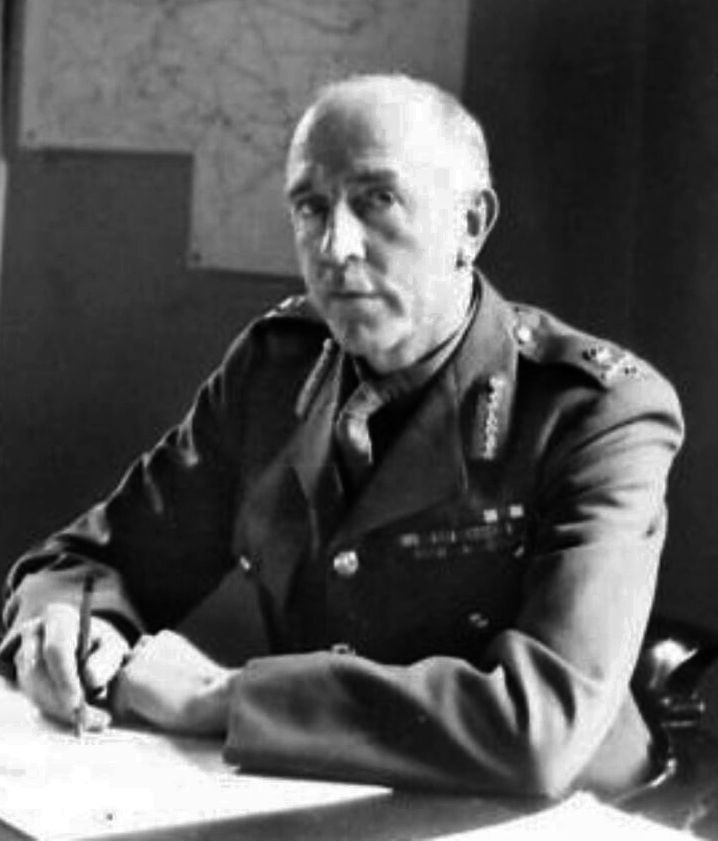
The 6th DLI pulled back at dusk on Achicourt, leaving Y Company of 4th RNF to serve as a rear guard. Soon enough, the 5th Panzer Division attacked, and an RNF anti-tank gun knocked out one tank. The Germans outflanked the RNF position, burning houses with high explosive shells and flamethrowers. Y Company had done their job, buying time for the rest of the column to get clear.
In Achicourt, what was left of 4th RTR, under Captain Cracroft, regrouped. Every time a Matilda crunched up, Cracroft waved his map in the driver’s face, to show him which way to go. Unfortunately, when one tank arrived, a German face popped out of it. The British greeted him with machine-gun fire. The Germans shot back, but both sides were too tired to aim accurately, and the Germans withdrew. The British were lucky that the Germans showed a distinct lack of aggressiveness by night.
The British 8th DLI, which had marched and fought heavily before the Arras attack, were exhausted, mostly from hunger. Men kept falling out of marches, and some had to be kicked by officers and NCOs.
The 4th RTR reconnaissance tank CO Lieutenant Peter Vaux was out of touch with his unit. He spotted a bunch of immobile tanks ahead of him and wondered why so many German tanks were apparently out of the game. They were 20 tanks from 4th RTR, all “brewed up” by German tanks and guns. Tank crewmen lay dead on the ground or half in their tanks, trying to escape when their machines were hit. Vaux realized that his tank was in view of enemy guns and ordered a withdrawal.
Vaux’s tank was so close to the Germans that he saw a German rifleman rest his weapon on a kitbag to take a headshot at him. Cracroft, in another tank, saw this and “pulled out his revolver and quick as a flash, shot the chap in the throat,” Vaux said later. “It must have been a jolly good revolver shot, and it saved my life.”
Vaux and his tank withdrew, saving all aboard, but the lieutenant had ample time to ruminate on the dead men and wrecked tanks left behind. “This was the end of the 4th Tanks as we knew it,” he wrote later. “In that valley, the best of crews, our tanks, soldiers, and officers were left behind.”
Some British forces never achieved their objective, like Hunt of 4th RTR. His tank threw a tread, a common failing. While his crew struggled to repair the track, he met up with Sergeant Strickland, who was escorting 40 German prisoners. Strickland was convoying them along with an empty rifle. Hunt was forced to leave his tank behind, destroying the radio set first.
All across the battlefield, the same results applied. Matilda tanks gained an initial edge from the German shock at seeing their shells bounce off of the British armor, but then determined tank counterattacks and 88mm gunfire tore them apart. Lacking tank support, the British infantry had to withdraw.
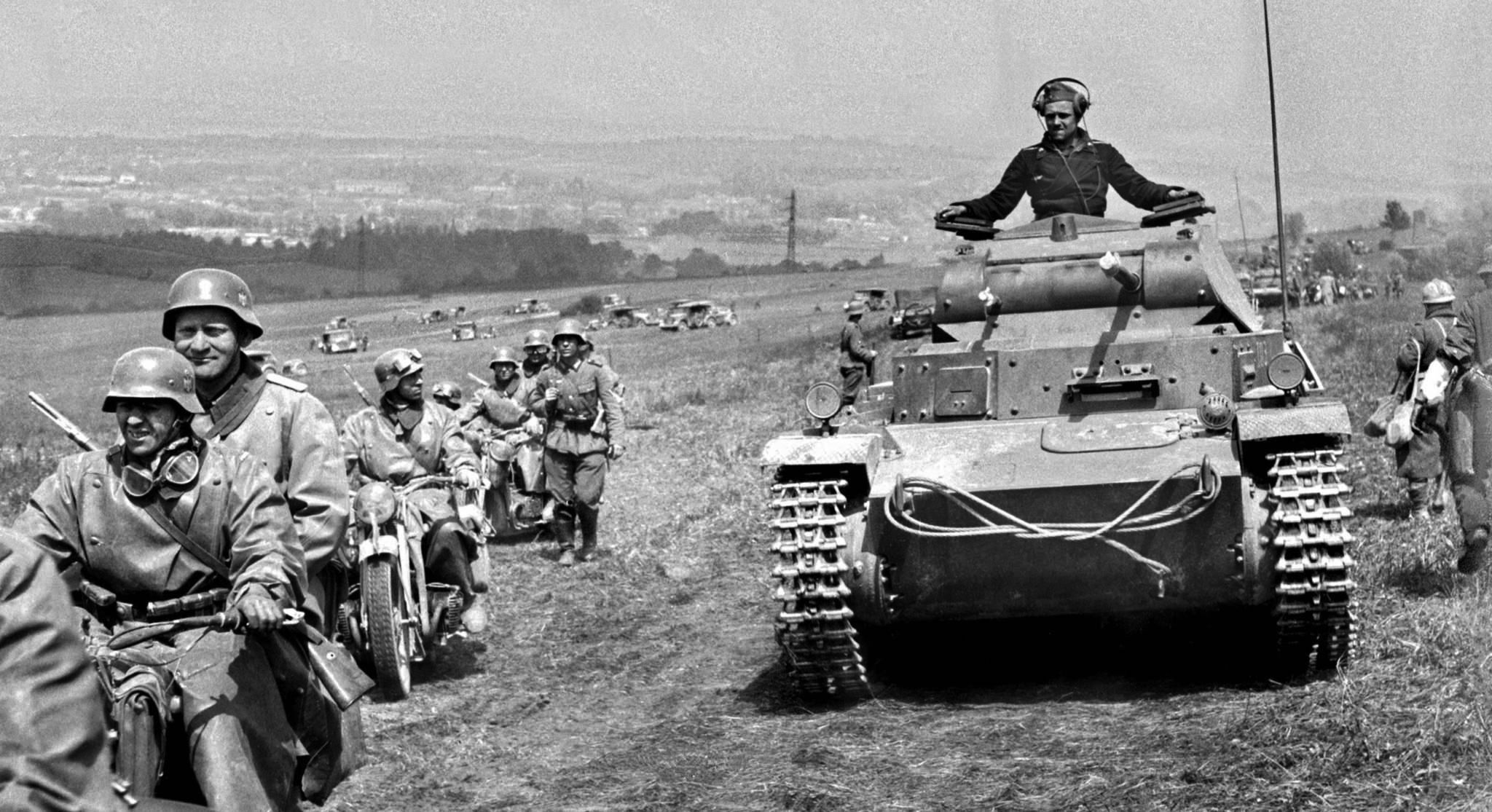
If British second-line infantry fell back, Himmler’s vaunted Totenkopf men, unused to fighting men who could return fire, were routed in their portion of the battle, fleeing the scene. A British report noted “the poor fighting qualities of the (Totenkopf) German troops encountered. They were very young and large numbers were observed lying on the ground downwards feigning dead, others ran up to the tanks surrendering.”
Disgusted, senior officers assigned Totenkopf to work more suited for bullies: occupation duties. However, on May 27, they met up with an isolated company of the 2nd Royal Norfolks in Le Paradis in northern France. The Norfolks put up a spirited defense until they ran out of ammunition and surrendered. The German commander, Fritz Knöchlein, lined up the prisoners against a wall and had them machine-gunned and then bayoneted. Two Britons survived and were able to rejoin their forces.
For this atrocity, Knöchlein faced a German Army murder court-martial, but Himmler intervened with Adolf Hitler to quash the charges. All Knöchlein drew was a mild reprimand—for not burying his own dead. However, a postwar British war crimes trial sent Knöchlein to the gallows.
Despite fighting a war of atrocities, Eicke did not join his subordinate in the dock, however. He was shot down in his personal plane —all motorized division commanding officers had one—by Soviet infantry machine-gun fire in October 1943.
As night fell on the 21st, both sides tended casualties and took stock. Sergeant Hepple’s Bren carrier broke down. He, his crew, and some lost infantrymen set off cross country and reached Arras by dawn. They were sent to the remnants of their regiments, regrouping near Vimy.
Meanwhile, Y Company of RNF did its job holding out against Rommel’s panzers. They were either all killed or taken prisoner.
The casualty bill was hefty by the small standards of 1940. Rommel lost between 30 and 40 tanks, 378 dead and wounded, and a similar number taken prisoner. Totenkopf and 7th Panzer men had panicked in this battle with an equally-trained enemy. Seventh Panzer had to be pulled out for the men to rest and to repair the tanks.
The British lost 100 men. Only 22 of 88 British tanks returned from the assault, while the French lost 20 tanks. While the numbers were a seemingly tactical victory for the British, they had fewer men and tanks in the field than the Germans—they could not afford to have two whole tank regiments wiped out. Furthermore, the attack had not broken through the German advance to cut off the head from the tail.
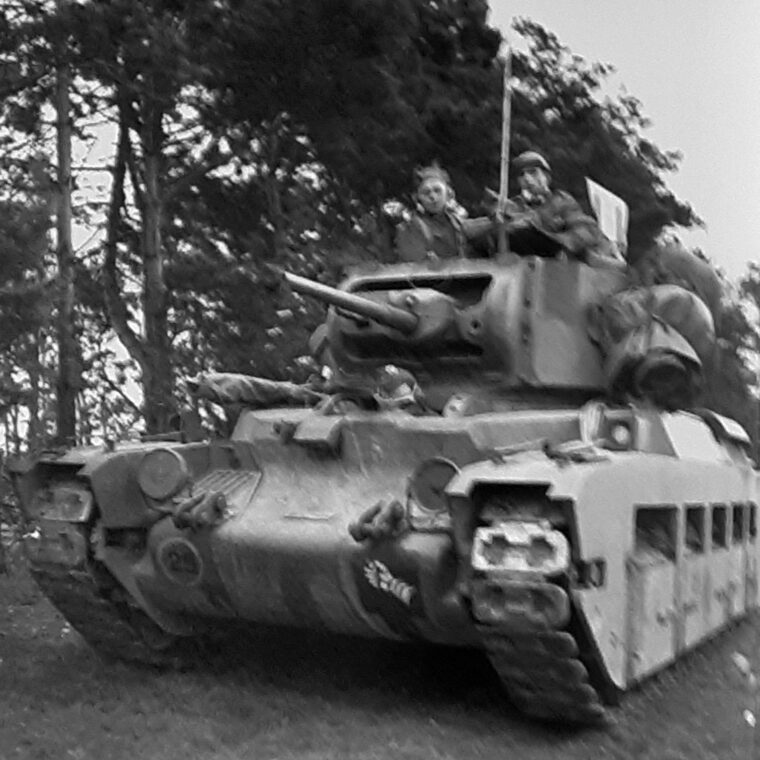
The Germans also learned a valuable lesson from the battle—while the 88mm gun was designed and configured for antiaircraft work, it could easily be converted to the anti-tank role. It soon was, and by 1943, 88m guns designed strictly as anti-tank guns were produced to cover the endless retreats. They were also mounted in the Mark VI Tiger tanks of 1944.
The German Army was also annoyed at the performance of Eicke’s concentration camp guards in battle. They had been lavishly supplied, but had not covered themselves in anything approaching martial glory. Their massacres of British prisoners—as opposed to Jews, who were universally regarded as fair game—offended the army’s sense of military honor.
A German figure who emerged from this battle with his reputation enhanced was Rommel himself, built up by the Ministry of Propaganda officer assigned to him, Karl Hanke, a fanatical Nazi and Alte Kämpfer from the 1923 Munich Putsch. He glamorized Rommel, much to the general’s chagrin. When not building up Rommel’s strengths, Hanke was carrying on an affair with Propaganda Minister Joseph Goebbels’ wife Magda, in a case of dueling adultery.
The British were also irritated by the results of the attack. It was the last hope for the northern armies in general, and the BEF in particular. The official history called the attack “a haphazard affair, more a swipe in the dark than a deliberate attack. Yet it came at a time when a swipe offered the only alternative to an ignominious retreat, and certainly the troops made it a glorious swipe.” However, it showed London that the British presence in France could no longer be maintained—it was time to evacuate.
This decision also had a major impact on the Anglo-French alliance. From here on in, the British would be only concerned with saving their army and the French were on their own.
The first British armored attack of World War II had a greater effect on the Germans than the number of casualties. Rommel had reported that he was attacked by five enemy divisions, not two armored regiments and two brigades. His message rocketed up the German chain of command to General Ewald von Kleist, who commanded the panzer force driving to the Channel. Based on this report, he was reluctant to attack any further westward until the situation at Arras had been resolved. His boss, Col. Gen. Gerd von Rundstedt, commanding Army Group A, was equally worried.
Rundstedt was the quintessential Prussian general staff officer down to the craggy face and solemn demeanor. Studying his maps, he saw the situation as a “critical moment in our drive to the Channel.” Fearing further counterattacks, he issued a May 24 order for his panzers to halt their advance, repair their vehicles, and wait for infantry to come up and dig in to hold the flanks of the advance.
Rundstedt’s decision was approved by Hitler himself. Thus was made perhaps the most important decision of World War II—the “halt order” that kept the Germans from driving to the sea, then north to capture the channel ports in a timely manner.
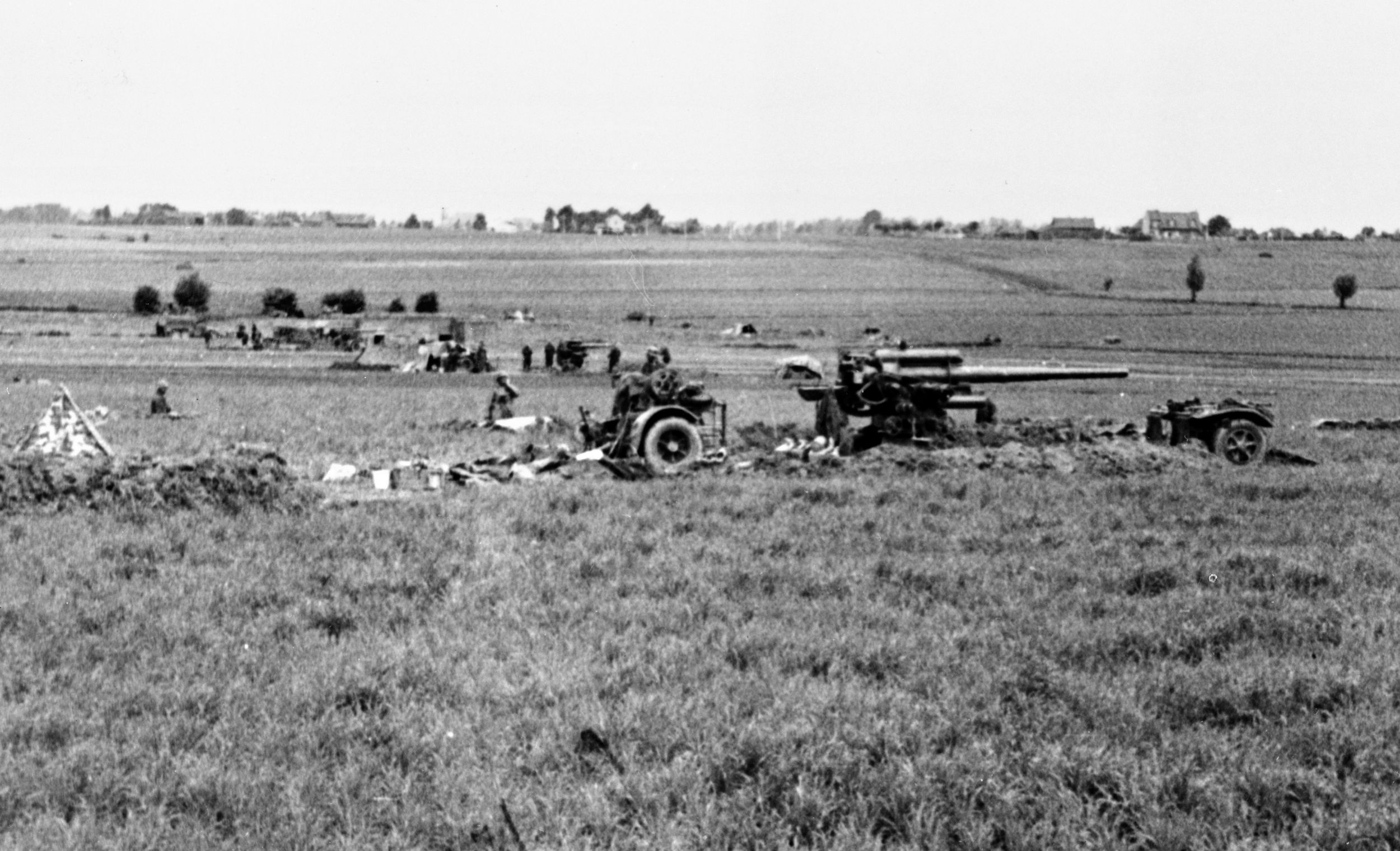
To the hard-driving 19th Panzer Corps’ Lt. Gen. Heinz Guderian, the order “made no sense,” but he obeyed, and the tanks stopped to refuel, re-arm, and repair.
While they did, the German attacks on the eastern side of Gort’s corridor continued. The pressure on the Belgian army was immense. As the days ticked by after the Arras counterattack, King Leopold III of Belgium, who was that nation’s wartime Commander-in-Chief under its constitution, decided his army and nation could not hang on under German pressure, and he surrendered his collapsing armies to the advancing Nazis on May 28.
The British were caught in a dreadful situation with tanks to the south, infantry to the north, and Dunkirk the only way out. Gort called off further counterattacks and ordered his battered divisions and troops, short of ammunition, food, and everything else, to make for Dunkirk, where Admiral Bertram Ramsay was organizing “the emergency evacuation of very large forces” under the codename “Operation Dynamo.” The German pause, about two to four days, gave the British time to flee to the port and its beaches.
The Dunkirk evacuation that would become legend began at the end of May. Years later, a new legend, this one started primarily by historian Basil Liddell Hart again, saw German generals explain their failure to bag the British Expeditionary Force.
As they often did when confronted with their failures—like so many other generals, past and present—the German generals denied guilt and avoided responsibility. In this case, their failure to reach Dunkirk ahead of the British and the “stop order” was blamed on Hitler.
Despite his heavy drinking and disinterest in the new armored warfare, Rundstedt was a revered figure to German generals, and they would not blame him for the bad decision. Nor would
they blame Rommel for 7th Panzer performing poorly at Arras in one of its first major battles.
Instead, they blamed Hitler—which was typical for German generals in interviews and memoirs—saying that the “Greatest General of All Time” would never listen to his professional soldiers’ advice. However, they claimed that Hitler prevented the final crushing drive on Dunkirk not because of the Arras counterattack unsettling everyone, but because Der Führer wanted the British to escape, thus creating conditions that would enable him to make a peace offering that would end the war in the West, obviate the need to invade England, and unite the two powers in an alliance against the Soviet Union. These German generals argued about Hitler’s immense admiration for the British Empire.
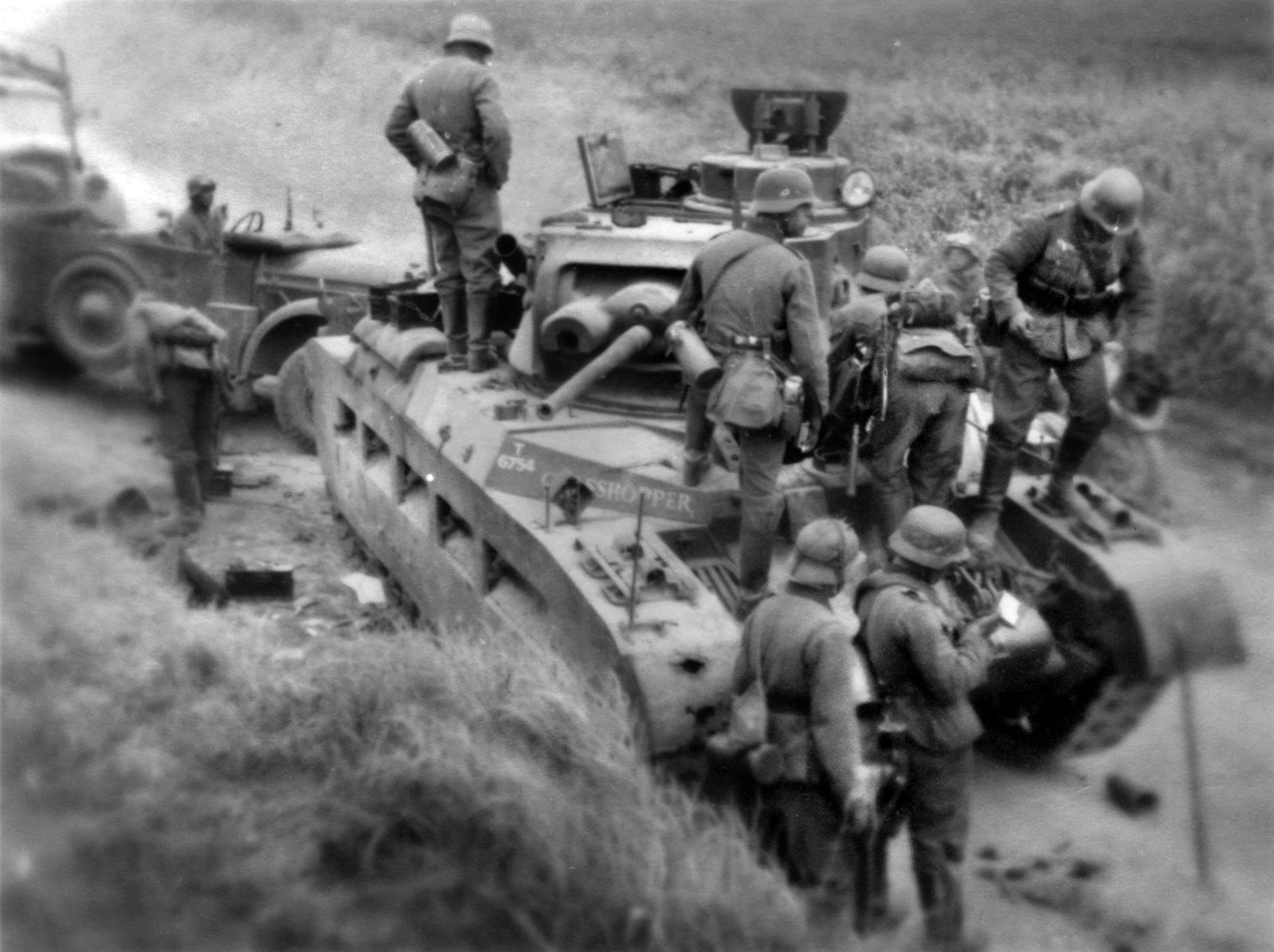
However, they fell flat in the face of facts—the British counterattack had frightened the German generals. Hitler’s posturing about uniting with Britain to fight the Bolshevik foe came long after Dunkirk, in his endless late-night conversations with his immediate entourage, who became increasingly weary of his repetitious monologues.
Anyway, it also seemed academic at the time. The British were evacuating their troops by sea across the notoriously difficult English Channel. That meant Hermann Göring’s Luftwaffe could sink their ships by daylight, and the German Navy could send E-Boats in to sink them by night with torpedoes. There was no need to risk panzers in the marshy terrain around Dunkirk—no good for tanks—when they had to head south to defeat what was left of the French army, seize their major industrial cities, and above all, conquer Paris. On May 26, the Halt Order was lifted. The same day, the British lifted 26,000 men off the Dunkirk beaches, in the first day of evacuation.
The Arras counterattack would be subsumed in the horrors of a long war to follow. The value of the Matilda tank was seen again in December 1940 and January 1941, when they clanked into battle against Italian forces in Egypt and Libya, defeating their superior numbers with great ease. When Rommel came to that battlefield to become the “Desert Fox,” his 88mm guns wrecked the Matildas. Future tank-to-tank slugfests would see larger numbers of more powerful tanks and crewmen die in horrific battles.
Arras itself, like many cities, expanded after the war, covering most of the battlefields. However, alert British officers going on modern “staff rides” to study and learn from these past engagements easily found walls marked with scars created by artillery or bomb bursts.
The human losses also remain to this day. At the Dunkirk Commonwealth Military Cemetery stands the gravestone of Private D.R. Harris, of the Worcestershire Regiment, killed on May 27, who was not in the Arras battle. Yet his epitaph surely speaks for every British soldier killed in that entire campaign, including Arras:
Into the mosaic of victory
I lay a pattern piece
My only son
Into thy hands.
David Lippman is a frequent contributor to WWII History and writes on many topics related to the conflict. He lives in New Jersey.
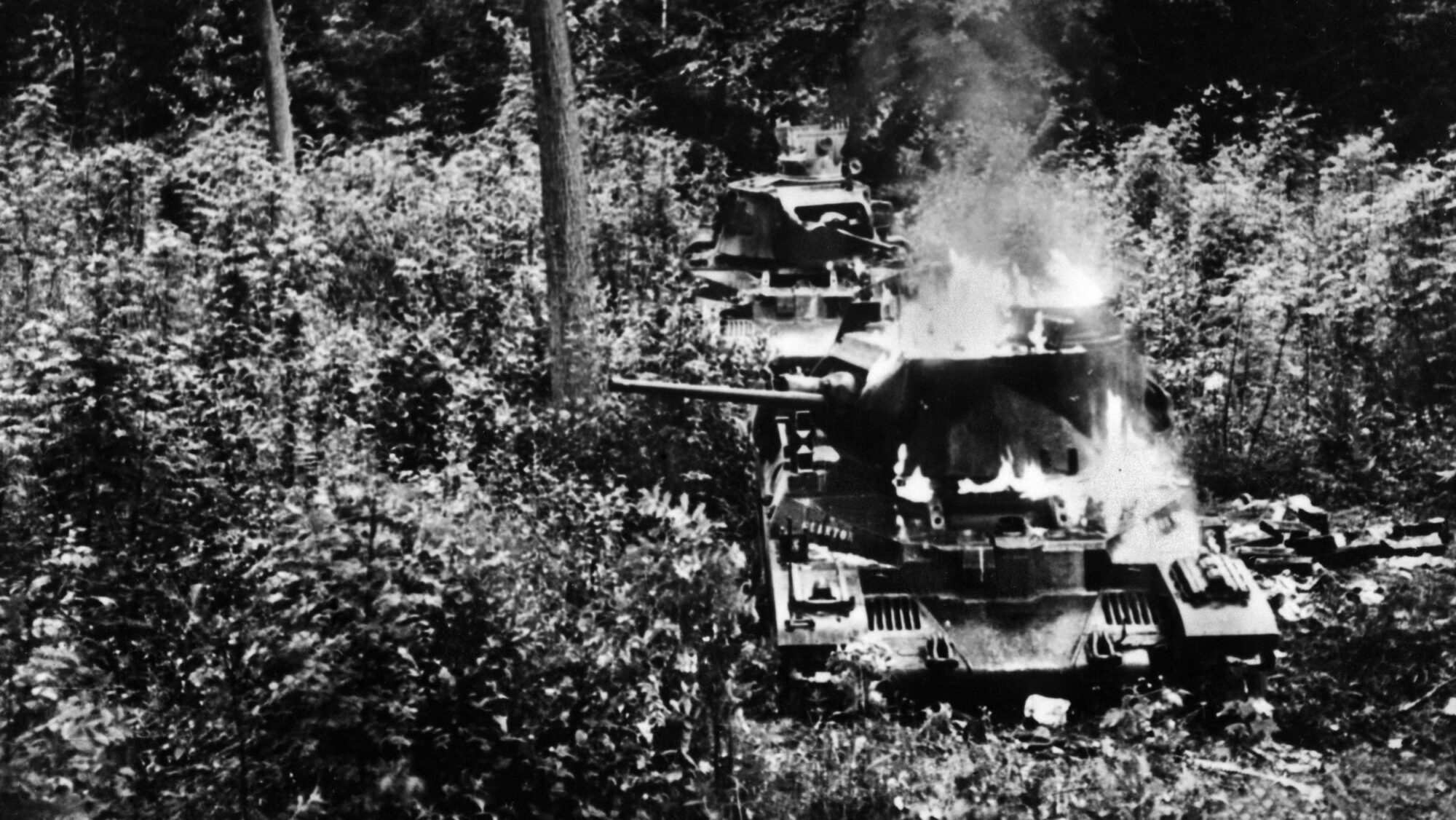
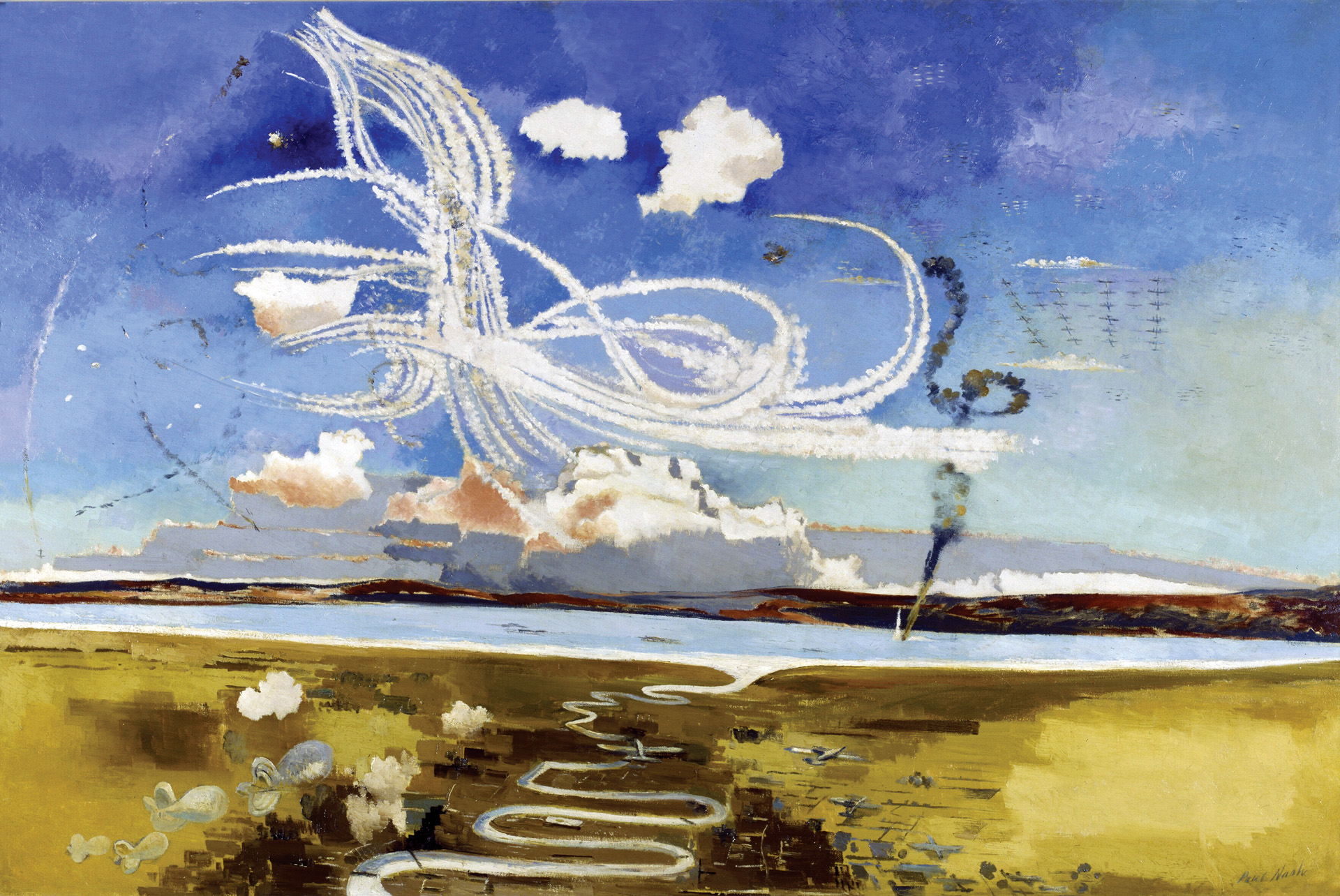

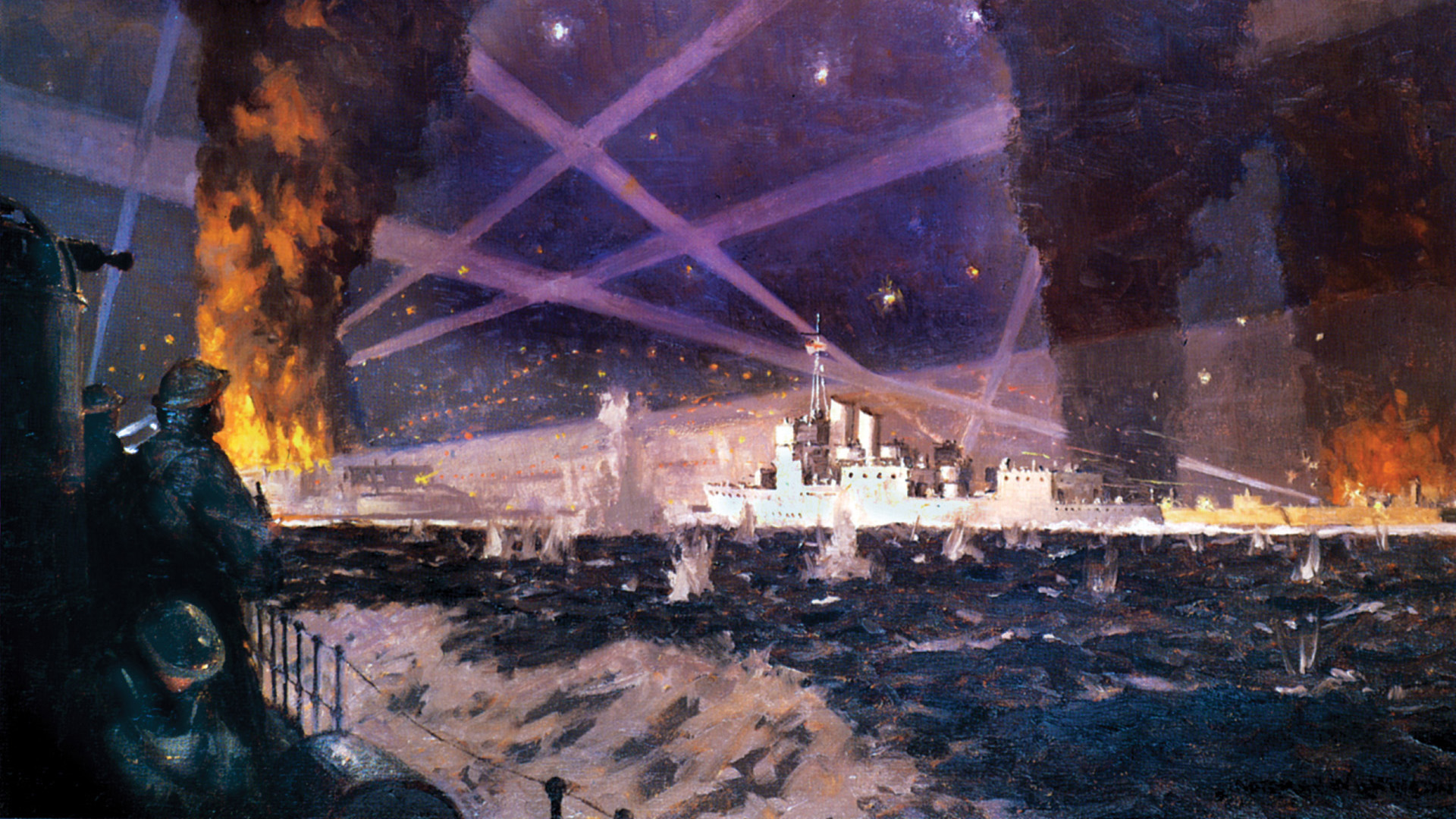
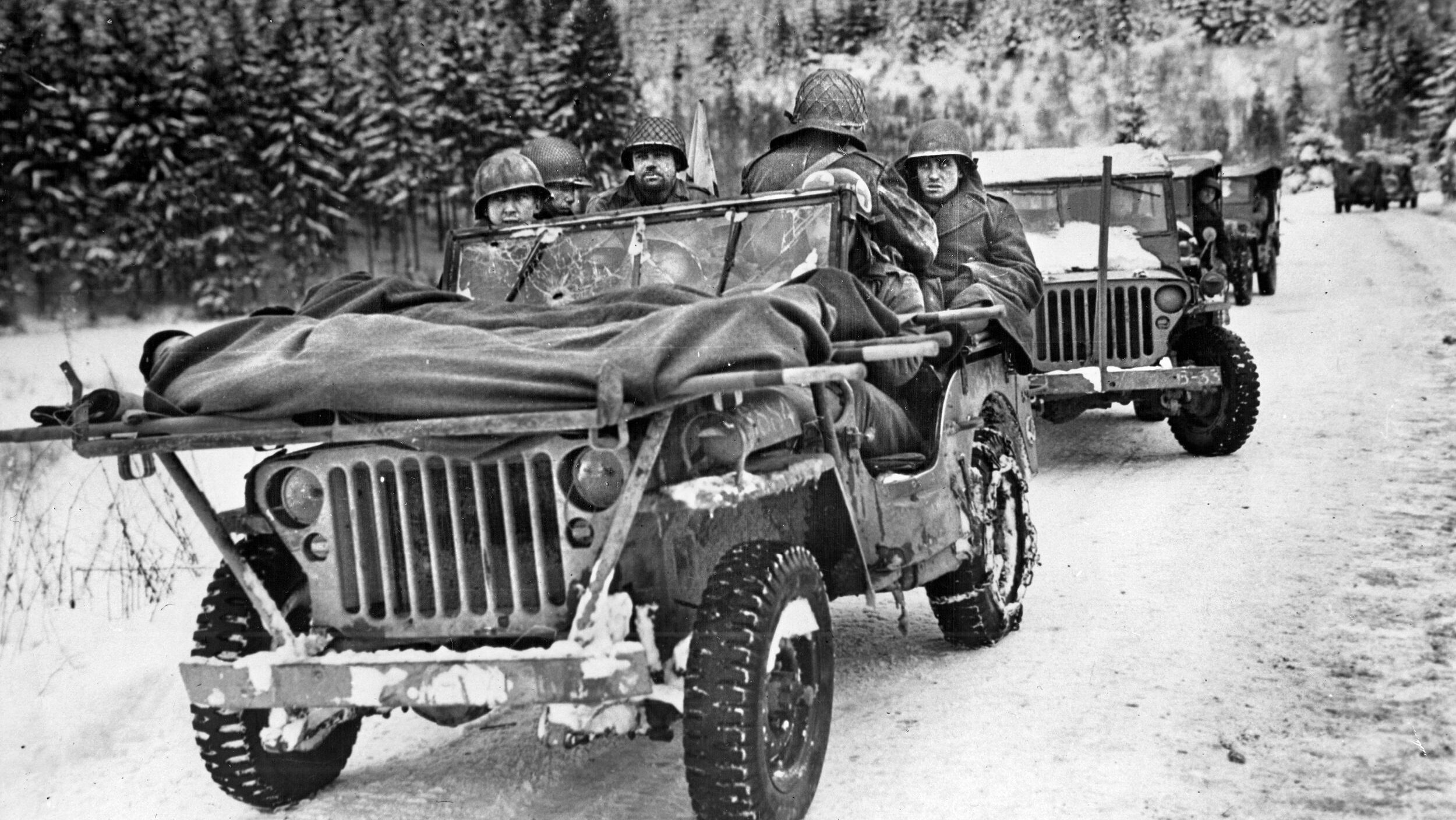
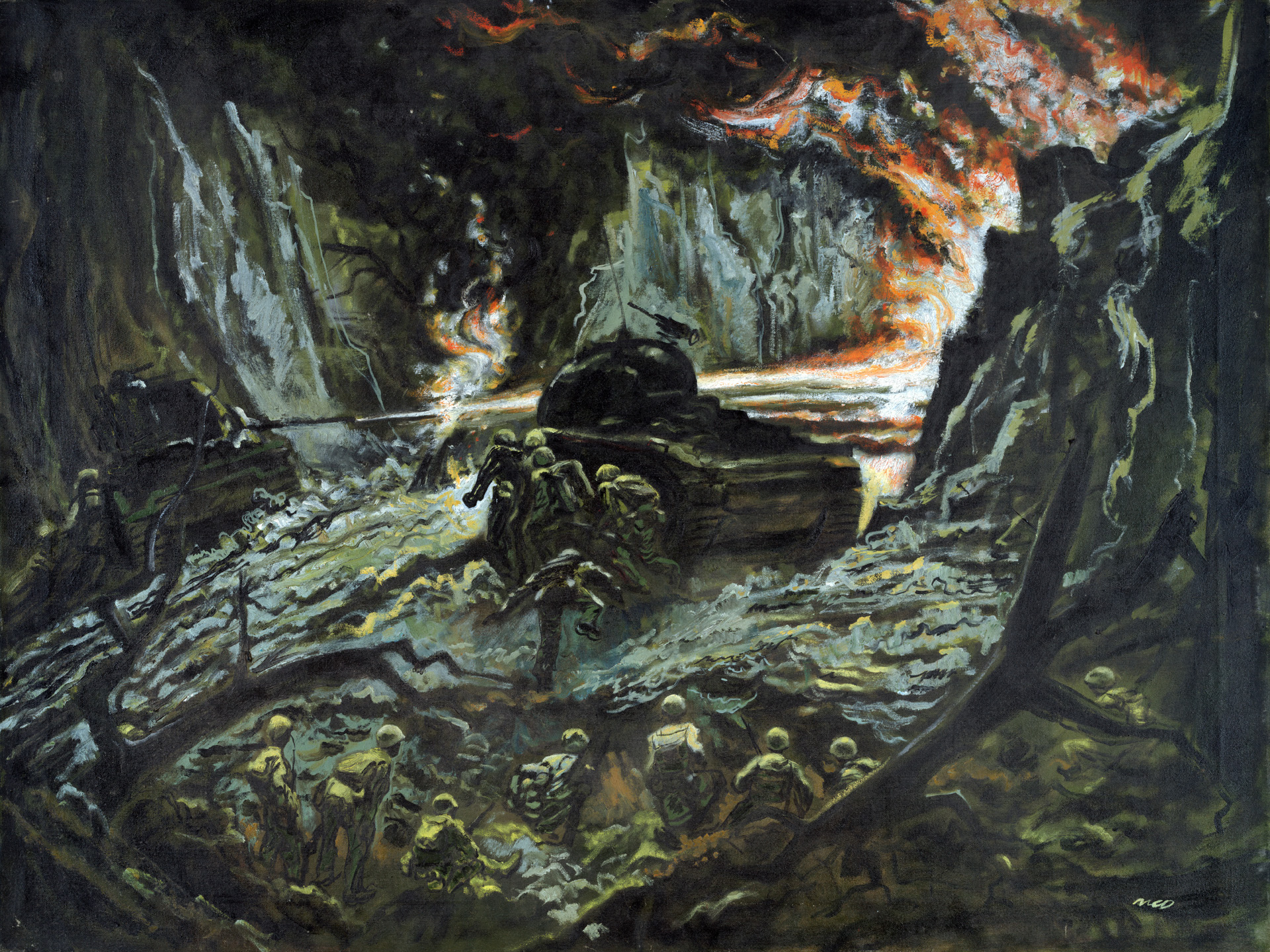
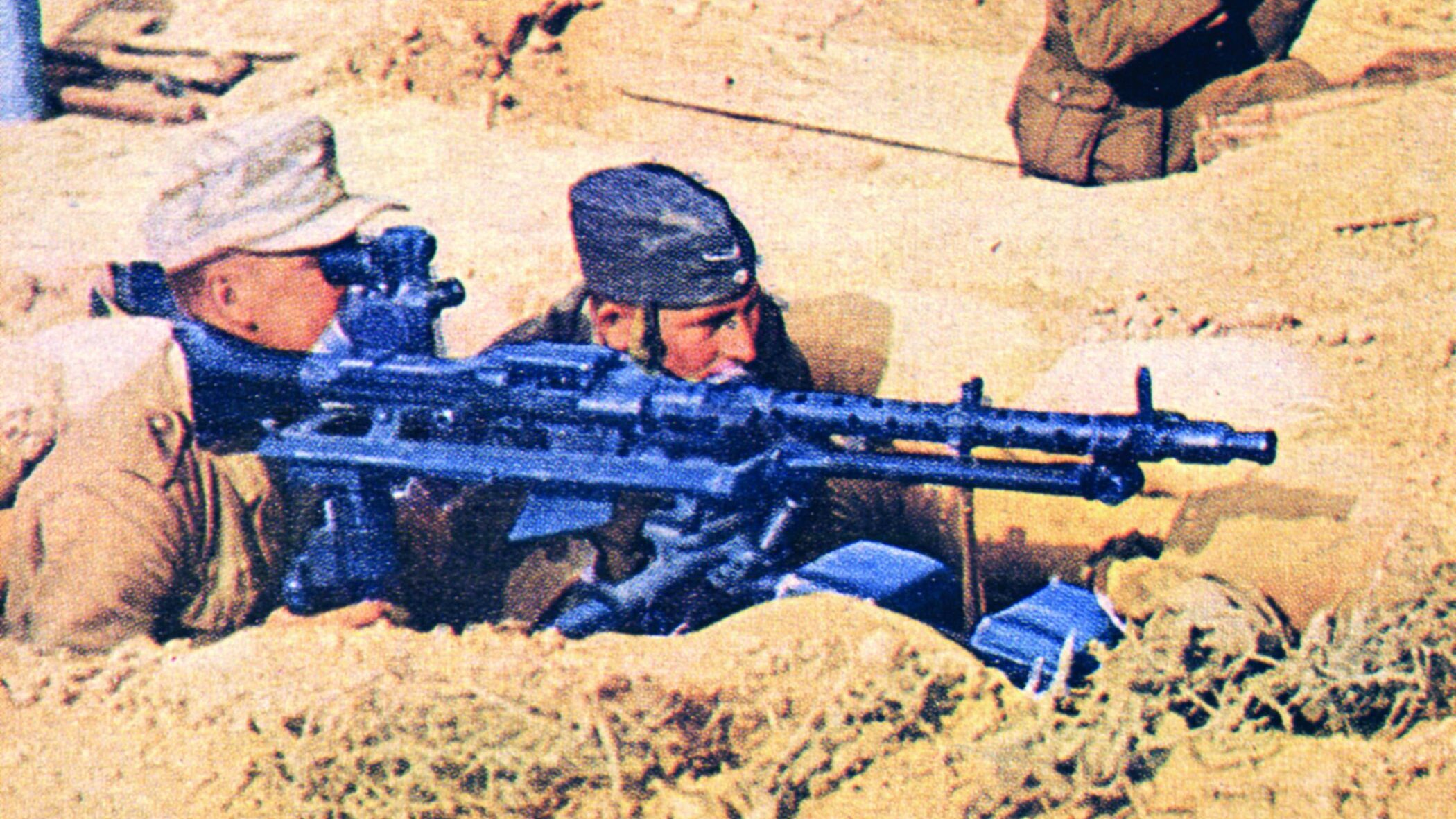
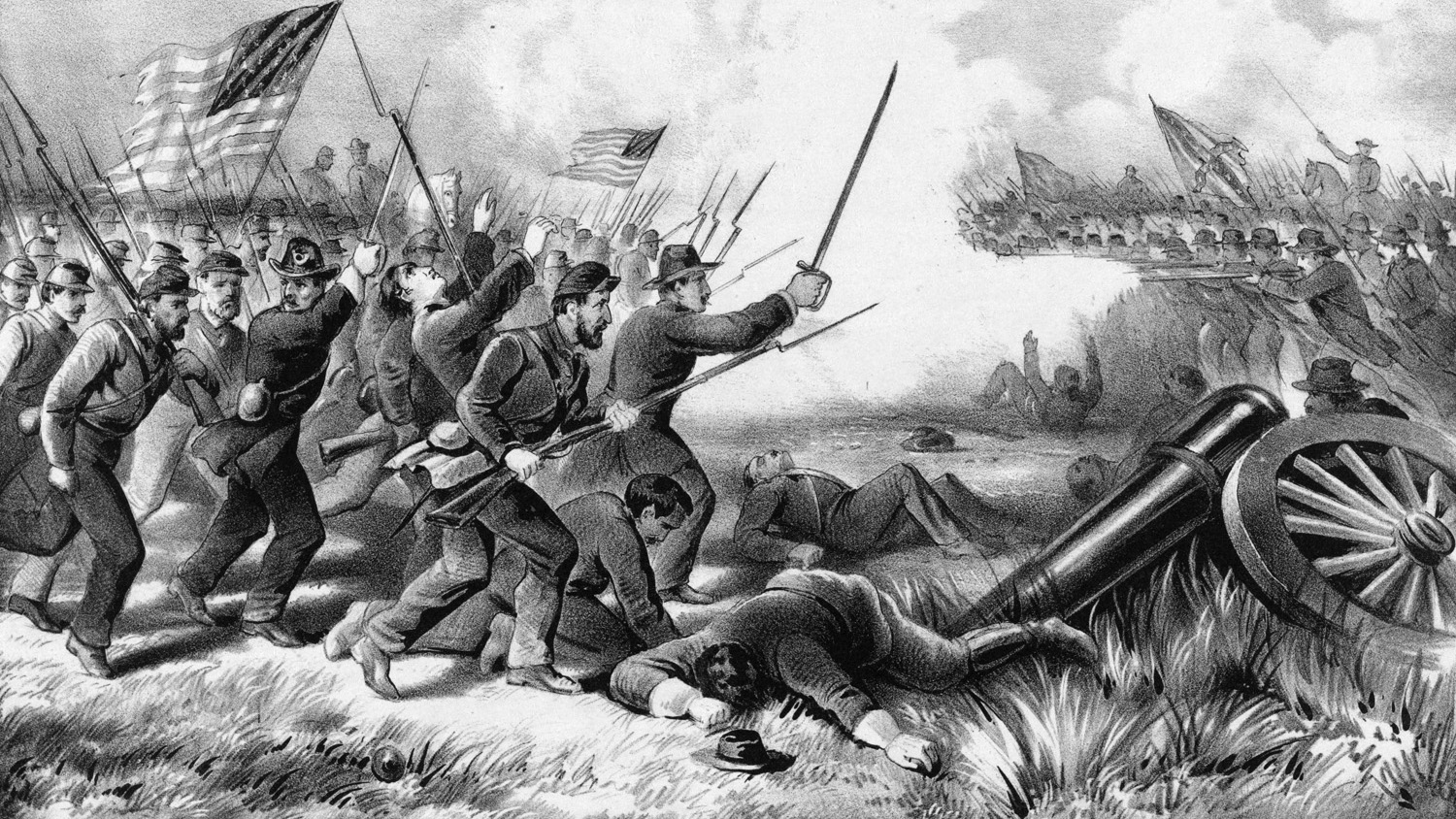
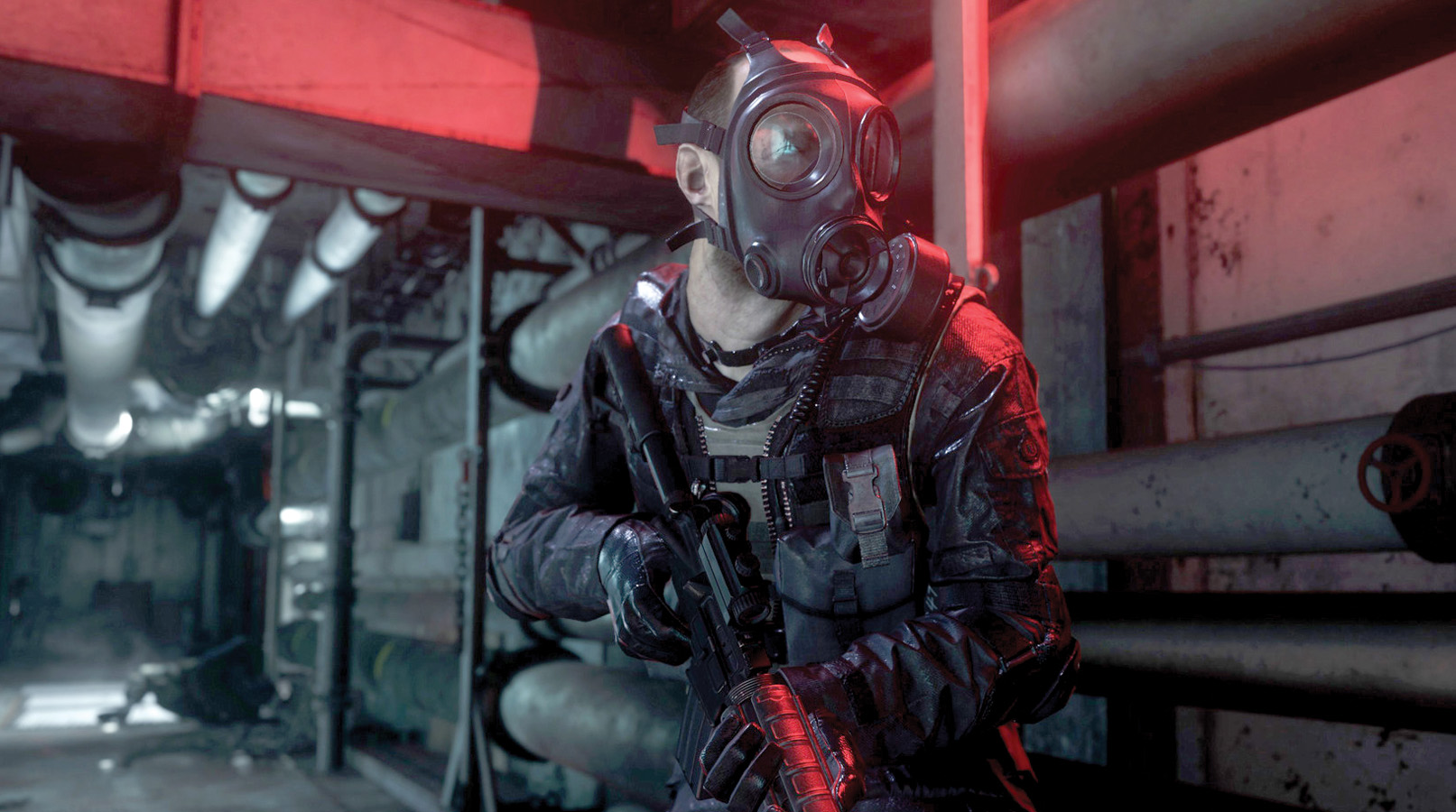
Join The Conversation
Comments
View All Comments